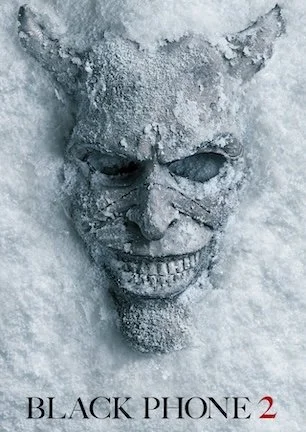Studio: Gravitas Ventures
Director: Tara Anaise
Writer: Tara Anaise, Tamara Blaich
Producer: Tamara Blaich, Jennifer Harrington, Megan Peterson, Tara Anaise
Stars: Sage Howard, Andrew Simpson, Shelby Stehlin
Review Score:
Summary:
Three documentary filmmakers travel to the Superstition Mountains in Arizona to search for the fabled Lost Dutchman’s Mine.
Review:
Having a character in a “found footage” movie make an out loud reference to “The Blair Witch Project,” acknowledging that the writer/director is perfectly aware of the similarities, does not automatically absolve a film of its derivative sins. At the same time, being too much like something else does not immediately mandate dismissing a movie as being not worth watching. Having recognized both perspectives, it can now be said that with scenes of “I’m sorry mom” video diaries, angry bickering about wandering in the wrong direction, bloody discoveries at ransacked campsites, and fairy tales from superstitious locals, “Dark Mountain” has its work cut out for it in coming up with an irrefutable reason why someone would want to watch it.
Oh, so that's why the cover art changed...
Three documentary filmmakers, shooting a presumably professional project with just a video-capable still camera and an iPhone, head to the Superstition Mountains in Arizona to search for the legendary hidden gold of the Lost Dutchman’s Mine. The “inspired by actual events” title card for “Dark Mountain” is only slightly more truthful than similar movies making “true story” claims when they are anything but.
There is a legend about Jacob Waltz’s rumored treasure being buried somewhere in that region, and ill-prepared adventurers have gone missing and died in search of it. Of course, none of those disappearances or deaths were related to UFO abductions, Apache ghosts, ancient curses, inter-dimensional vortexes, or any of the other half-realized ideas that this screenplay pours into its kitchen sink of ambiguous explanations.
Kate, her boyfriend Paul, and hanger-on Ross have their heads filled with folktales before making for the mountains and setting their personal mystery into motion. Over the course of their five-day trek, the trio encounters a half-naked mountain man stalking them from a distance, tri-pointed lights hovering in the night sky, demonic possession, and even travels back in time to 1976. “Dark Mountain” expects the audience to make some semblance of sense out of these wildly divergent threads, since the story itself doesn’t tie any of it together in a meaningful manner.
Whenever the movie strays too far from previously established “found footage” formulas, “Dark Mountain” doesn’t know what to do next. Midway through day three of five, Kate sees something strange materialize behind Paul while exploring a cave. She goes into hysterics, flees as fast as possible, and as soon as Paul asks what she saw, Kate calmly claims, “nothing … must have been the bats.”
Shortly after, the threesome finds a metal hatch hidden in the ground. After brushing away loose dirt and sand however, they suddenly decide it is time to return to camp, reasoning that they can come back the next day and open it then. Yeah, no sense in doing it now, when there is still plenty of light and your hands are already touching the handle. Better to have a pointless discussion about when would be best to pull back the lid instead of, you know, actually pulling back the lid.
Dropping subjects like hot rocks at the first sign of intrigue becomes commonplace from that point forward. That same evening, Paul becomes possessed, starts speaking in tongues, and virtually nothing about the incident is mentioned the next morning. “Hey Paul, remember last night when you were clutching that knife in a trance and your body started contorting before you collapsed to the ground? Um, what was that about?”
An advantage keeping “Dark Mountain” visually engaging, aside from actress Sage Howard’s attractive tomgirl appeal, is its interesting American Southwest setting. It’s a change of pace from the usual nondescript forest or brick-walled building, though panoramic establishing shots and vista montages linger long after serving their narrative purpose. Once the location is suitably set, cutaways of desert stones and close-ups of cacti become superfluous time killers.
More distracting are strange stylistic choices, made to make the movie artistically appealing at the expense of a motivated story. Everything shot with Kate’s cellphone is given a scratchy super-8 film filter. Sure, it’s an interesting look, but how would B-roll shot to be blurry and dirt-specked be useful for editing a proper documentary? Fast-forwarding footage to skip time and setting some sequences to a poor man’s fusion of Nick Cave and Tom Waits tunes just as confusedly jumble the film’s premise.
“Dark Mountain” is made well enough for what it is. For a seen-before “found footage” film with no ambition greater than simply completing a basic movie, it gets the job done. The real issue lies in what purpose the movie intends to serve.
This is a movie created for no better reason than to give the cast and crew experience and exposure. What the filmmakers need comes first. What an audience wants comes second. No one sits down and says, “what would horror fans really enjoy?” or “how can we make a creative project that stands the test of time?” and comes up with “Dark Mountain.” No, someone says, “what can we do that’s cheap and easy just to have something out there with our names on it?” And this is how the world ends up with one more “found footage” film that no one will remember in two years’ time, if it takes that long to forget.
Review Score: 45






Compelling performances keep “Hallow Road” swimming as strongly as possible against the strong current of a drowsy pace.